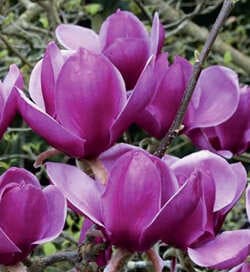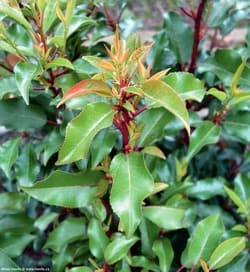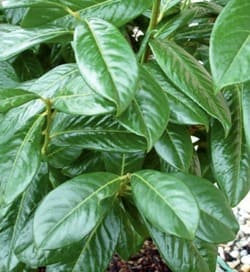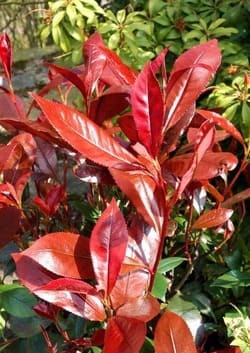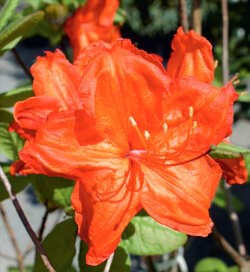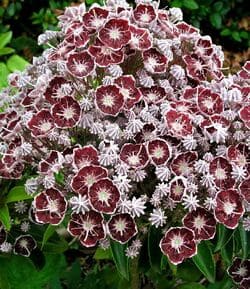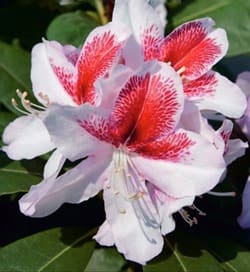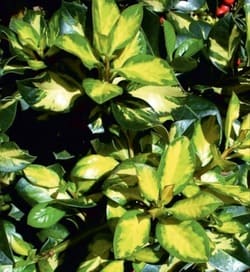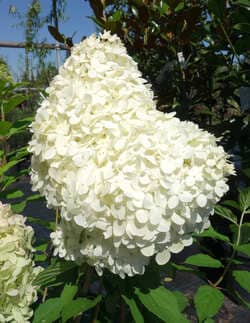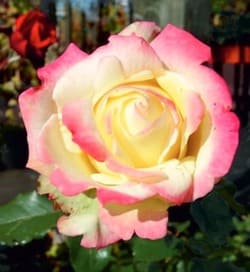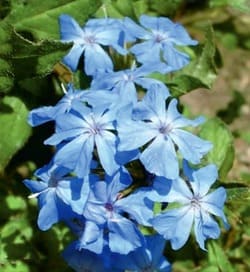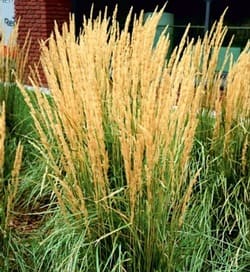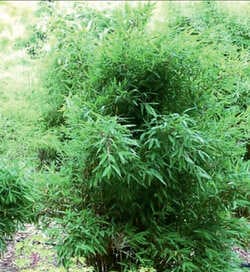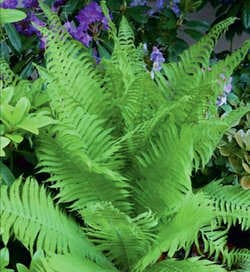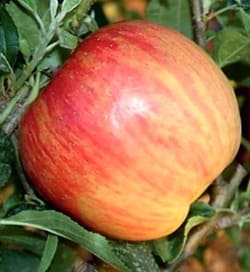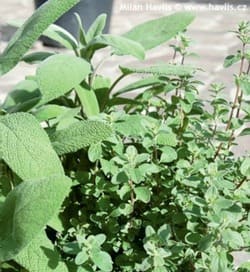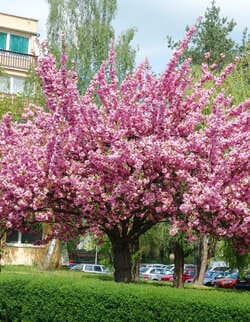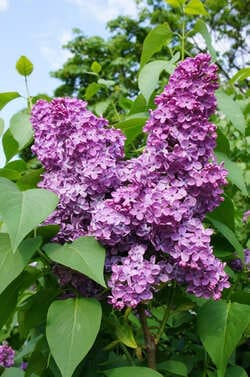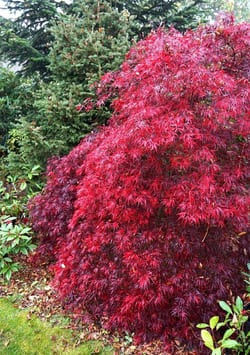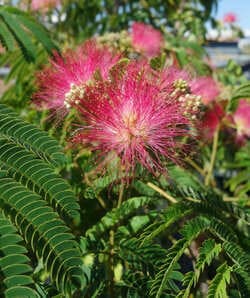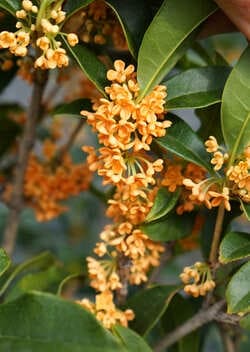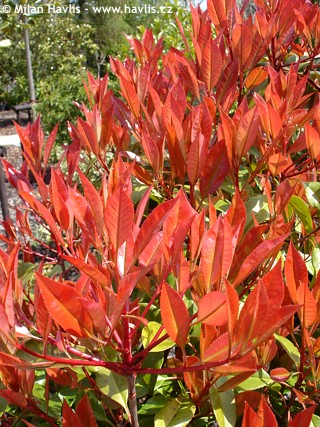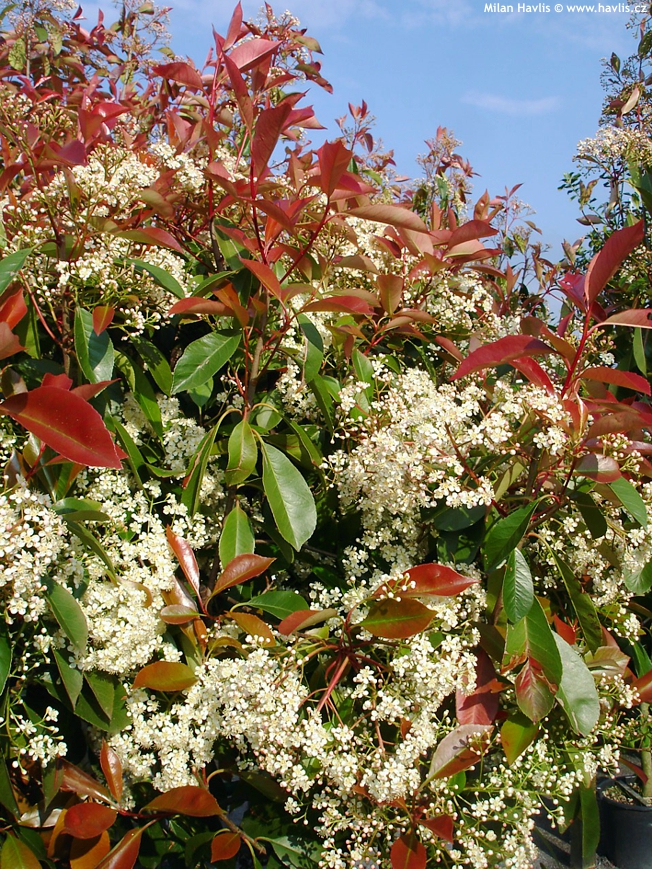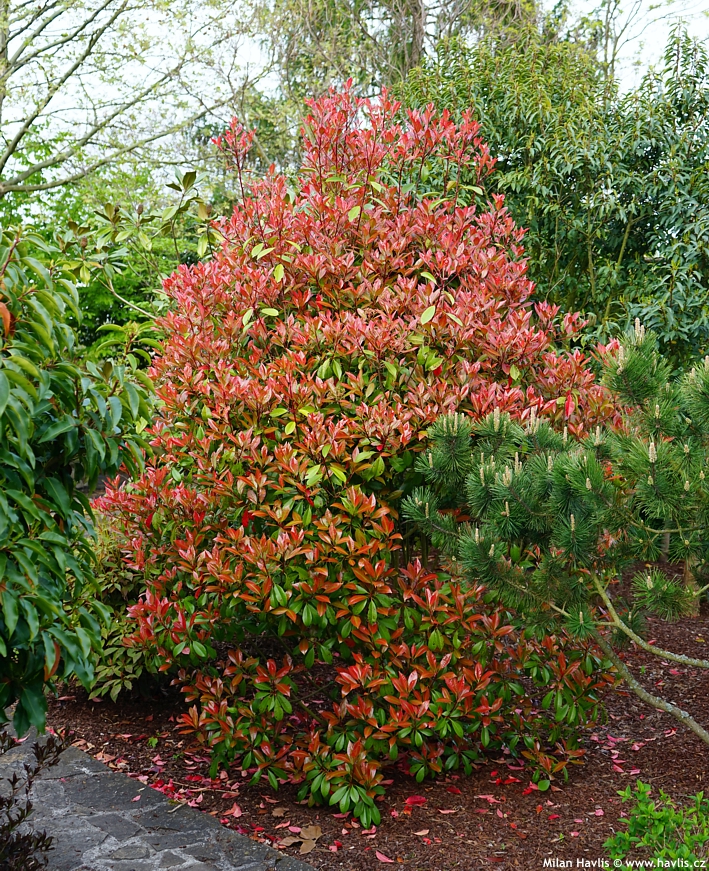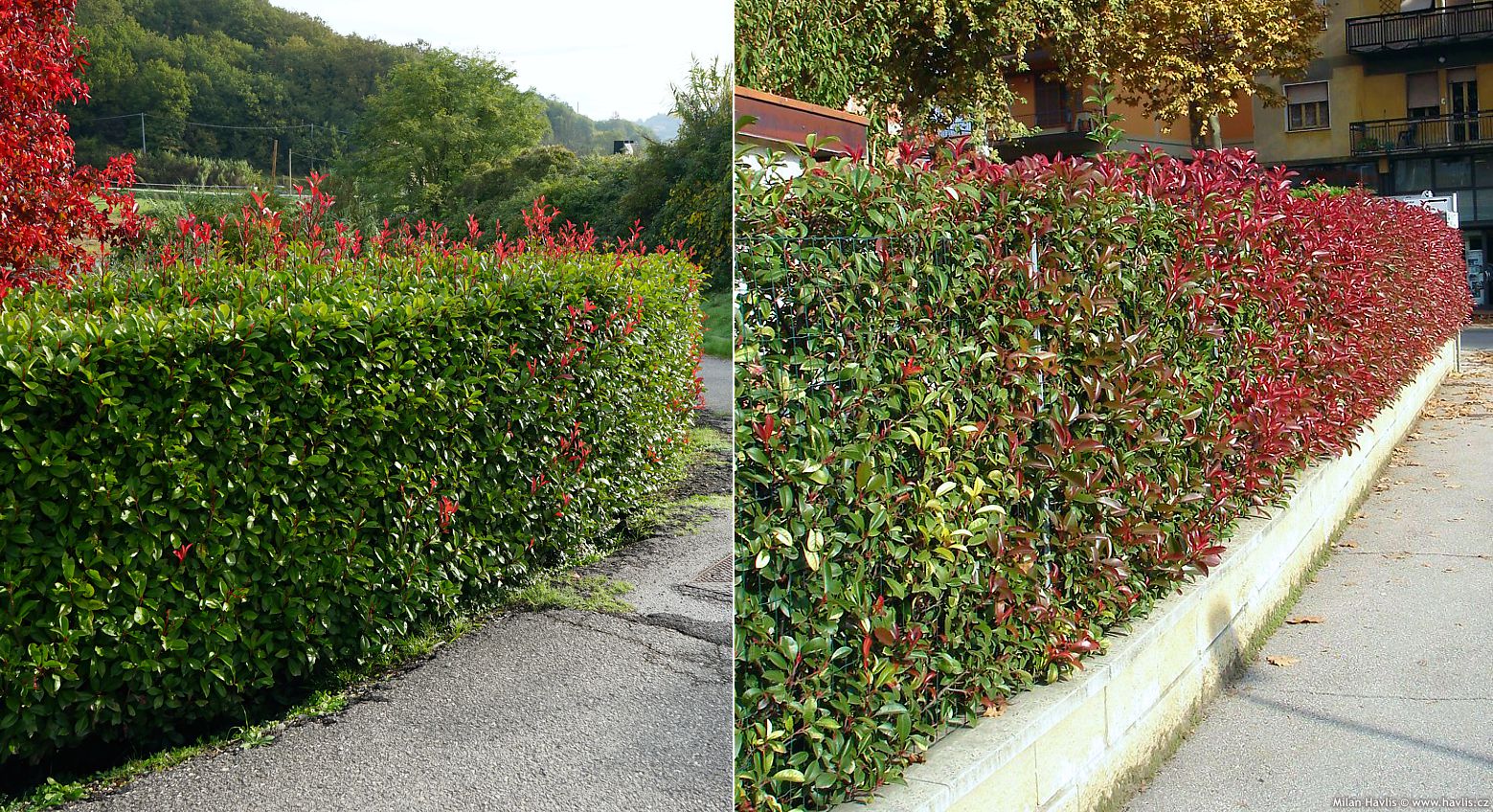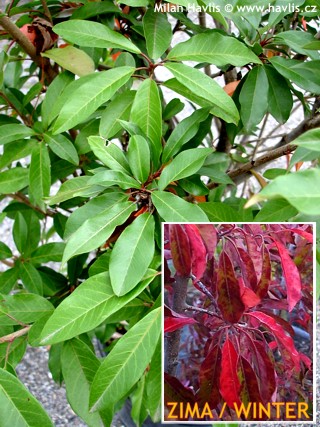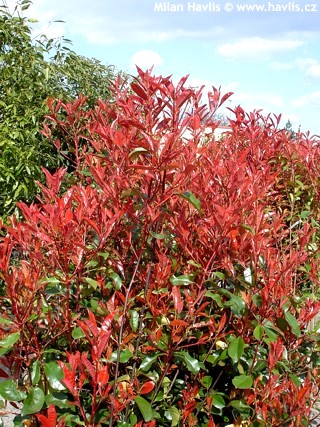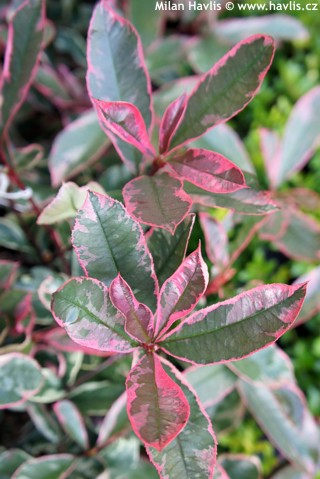Photinia x fraseri 'RED ROBIN' Fraser's photinia


Photinia
Fraser’s photinia is an evergreen shrub or a tree, a cross between Japanese photinia glabra and Chinese photinia serratifolia. It was found in American town Birmingham in Alabama around 1940, and introduced to commerce some 15 years later named Birmingham. For some reason this name was soon dropped and USA was flooded with millions of plants of super attractive Fraser's photinia. Originally it was used as lush specimen evergreen shrub but soon after it became possibly the most common evergreen hedging shrub of the south, and as it was trialled far north it reached states in USDA zone 7 and even 6 where its distribution stopped.
Red Robin is a New Zealand selection of Fraser's photinia which is considered the first and also possibly the most successful Fraser's photinia variety of 20th century. After 20 years from its introduction it received the Award of Garden Merit (AGM) by the English Royal Horticultural Society (RHS) for great performance, beauty, and durability. It produces larger and glossier leaves with a more striking shade of red when they emerge. They are evergreen, 10-15 cm long, 4-8cm wide, highly glossy, dark green when mature, and completely cover the plant. In late spring older plants produce profusion of dense corymbs composed of tiny white flowers followed by small, firm, spherical fruit on long stalks in autumn.
Apart from formal hedges photinias are used as large lawn specimen shrubs or in mixed hedges making a showy display of vibrant red new foliage as well as serving as a dense screen against unwanted looks from neighbouring garden or streets. Pruning, trimming, or clipping can be done almost anytime from spring till midsummer. It readily regenerates also from old wood which makes this red-leaved jewel indestructible. Plants in hedges should be placed at least 70-100 cm apart, not closer.
Fraser's photinia is not very fussy about soil type, it only hates waterlogged and compacted ground. For best results grow it in moist but well-drained, humus-rich, acid soil. In order to retain moisture and to keep the ground from temperature swings in winter, keep it mulched all year round, especially during the first years after transplanting. Photinia is quite drought tolerant when fully established but might suffer during dry winters of zone 6 so an extra watering is advisable once a month in frost-free periods if the ground is dry and not frozen. It is reliably hardy to -24°C without damage, and has withstood a few degrees lower with some damage of previous year's growths and foliage but always regenerated from healthy wood.
Last update 19-01-2009; 16-11-2019

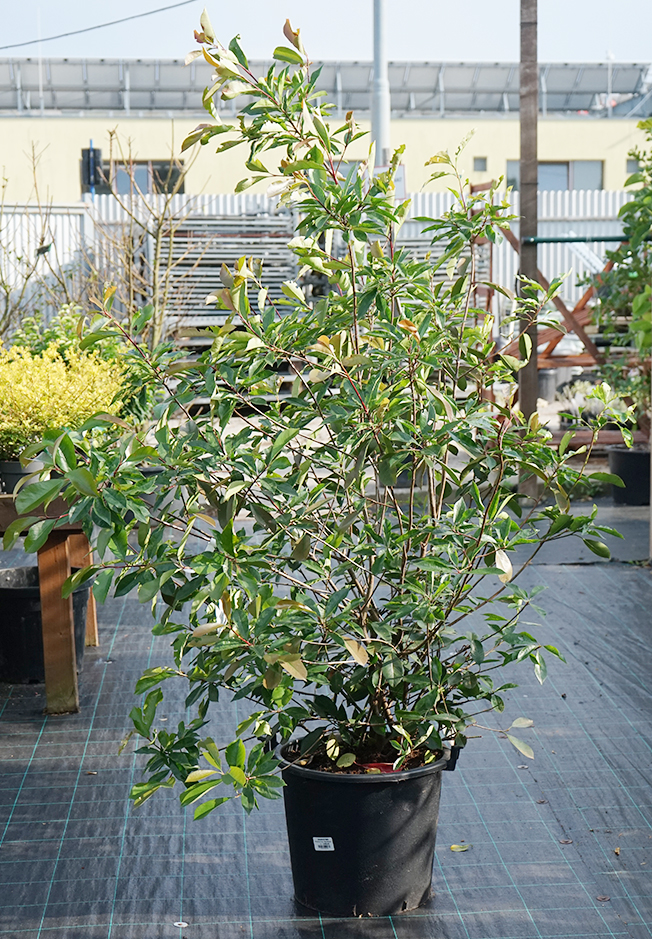
Goods are shipped all over Europe. For Russia and U.K. and for further details please read about SHIPPING OPTIONS HERE.
Are you interested in a serious discount for orders NOV-FEB? Check your options here.
THE PRICES INCLUDE VAT of 15%. For quick conversion you can use 1 CZK = approx. 0.04 EUR
- STANDARD QUALITY - Plants of this group are 1st class quality with number of branches and overall density adequate to their size and age, considering they were container grown.
- DE LUXE QUALITY - This label guarantees a luxurious quality of manually selected plants that, compared to their height and age, are exceptionally dense and beautiful.
- EXTRA - These plants are usually mature and bigger specimens with exceptional overall appearance.
- STANDARD (as described in the plant form) means a tree with a trunk of 190-210 cm and a crown at the top, unless specified differently. The commercial size for trees is their girth measured in the height of 1m from ground.
- HOBBY - These plants are of the same quality as our standard-quality plants but younger and therefore cheaper.
- SHRUB - a woody plant with branches growing bushy from the ground level.
- HALF-STANDARD or MINI-STANDARD - a small tree with shorter trunk, its size is usually specified.
- FEATHERED - These are trees with branches growing already from the base of the trunk and up along the stem.
- GRASSES and PERENNIALS - Sizes given usually read the diameter of the pot or the clump, as specified.






